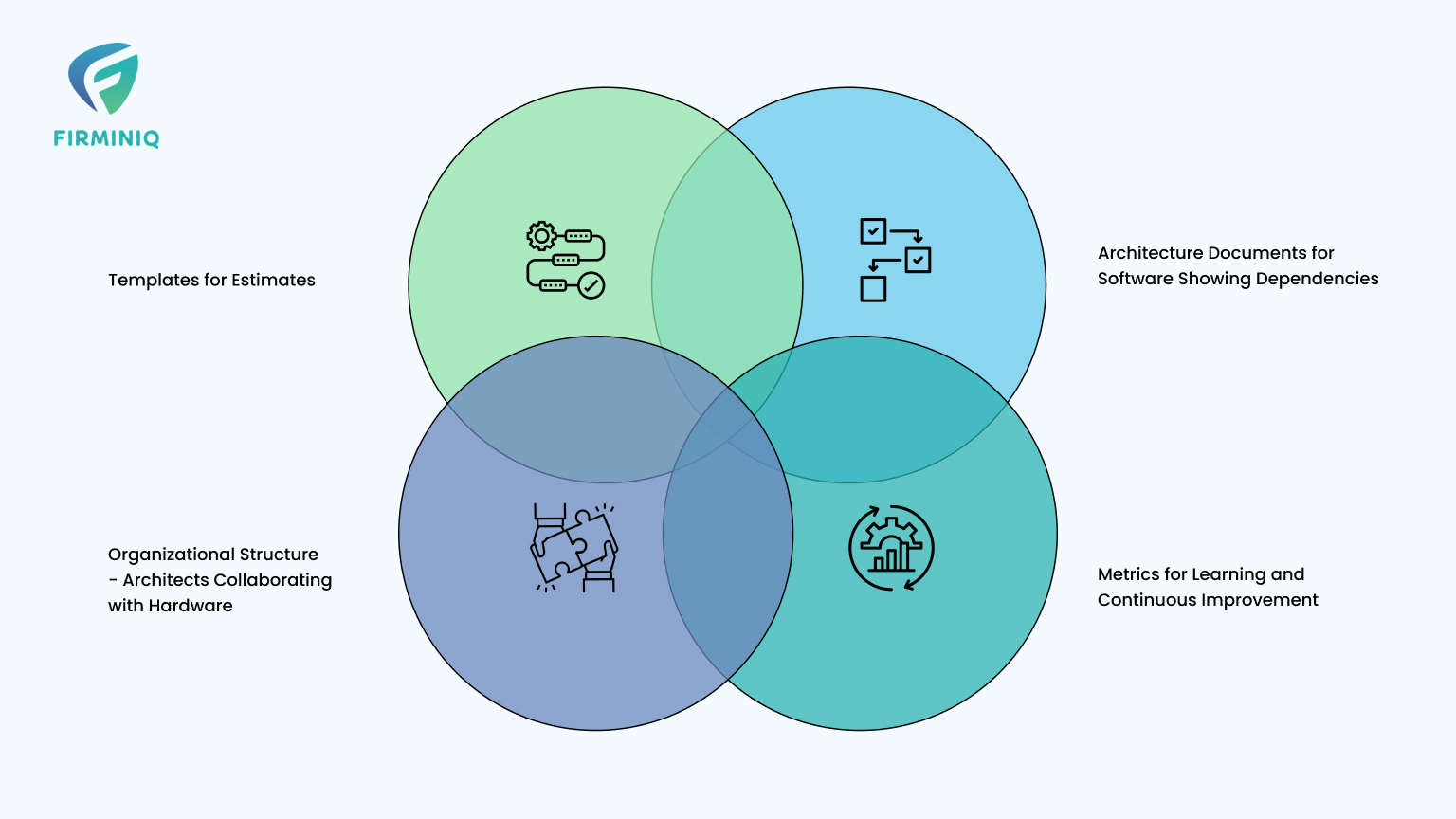Connected health projects encompass the most critical elements, from mobile applications to Remote Patient Monitoring (RPM), and a diverse range of device integration applications. The interconnected ecosystem and landscape require Agile approaches to integrate and unite several aspects into an effective solution.
Agile methodologies, such as Scrum and Kanban, have revolutionized software development by emphasizing collaboration, flexibility, and iterative progress. In larger organizations or complex projects, scaling Agile practices becomes essential.
These methodologies have become a cornerstone of software development in today’s dynamic world and enable teams to deliver value quickly and adapt to changing requirements. However, when it comes to the development of hardware and firmware, unique challenges arise due to constraints as the hardware development is not aligned with software development. Let us dive into the challenges faced while trying to achieve synchronization in Agile development for connected health projects.
The Challenges
Hardware development often follows a waterfall approach, with well-defined specifications required to ensure expected outcomes. This is crucial to prevent costly changes after mass production. Alignment with sales cycles, shipping dates, marketing campaigns, and events is essential, as hardware is often linked to retail store readiness and product launch schedules. Unsold hardware inventory can result in significant inventory costs and lost opportunity costs.
Firmware on the other hand can be updated, but it depends on users’ willingness and feasibility, especially with regulated medical devices. Managing multiple firmware versions can be challenging.
Software development within connected health projects typically follows Agile methodologies, offering flexibility to adjust to changes quickly and accommodate evolving requirements. Addressing these challenges is vital to fostering a proactive and holistic approach to hardware, firmware, and software integration. Read out and know how these challenges can be navigated
Navigating Challenges of Healthcare Agile Integration in Hardware, Firmware, and Software
Successful integration of hardware, firmware, and software in connected healthcare projects needs planning, continuous communication, and an understanding of the team’s working style and constraints. Here are some fundamental principles and practices to facilitate this integration effectively:
1. Careful Planning and Road–mapping
The software team needs to plan its roadmap and high-level features based on the overall product requirements, including hardware and firmware components. Hardware has a long and fixed lifecycle, so deadlines must align with its development stages.
Software can adjust sprint plans as per the hardware development lifecycle, allowing for flexibility.
2. Collaboration at Organizational Level
The software architect should closely collaborate with hardware and firmware teams to understand dependencies and plan accordingly. Proof of Concept (POC) can be conducted during the initial development phase to test compatibility with connected hardware/firmware components.
Building a POC is a common and effective approach for the software team to test the working and development with connected hardware or firmware components.
3. Coordinating Software, Hardware, and Firmware Alignment
Develop an overall software roadmap that accounts for dependencies on hardware and firmware. Ensure agile teams are aware of upcoming changes and align their work accordingly.
Scrum masters should understand the hardware development cycle to plan for spikes and sprint activities.
4. Dependency and Communication
Clearly define dependencies between hardware, firmware, and software teams. Hardware and firmware teams should publish their development plans, including initial samples and connectivity aspects.
Feedback loops should be established to incorporate software feedback into hardware and firmware development.
5. Feasibility and Integration
Software teams should plan based on hardware and firmware specifications. Continuous integration with hardware should be planned, including testing with hardware test versions and samples.
Quick communication and feedback sharing with hardware and firmware teams is essential.
6. Quality Assurance
Test cases should be designed to ensure that hardware, firmware, and software components, as well as their connected features, are well-documented and tested. Non-connected or hardware-dependent features can be deferred to later sprints when hardware is more mature.
7. Launch Alignment
Software features should align with the launch date of the hardware product to ensure that all required features are available when the product is released.
Additional Considerations You Must Know

Based on FIRMINIQ’s experience in different Agile healthcare projects and expertise, there are some of the additional considerations that help improve the alignment and collaboration between hardware, firmware, and software development. Let us delve into these elements in more detail:
1. Templates for Estimates
Templates for estimating project timelines, resource requirements, and costs can provide a standardized and consistent approach to project planning. Therefore, having standardized templates for estimates is vital to streamline project planning.
2. Architecture Documents for Software Showing Dependencies
Detailed architecture documents that outline software dependencies, especially those related to hardware and firmware, are essential. These documents serve as a reference for all teams and ensure a mutual understanding of the system’s structure and interactions.
3. Organizational Structure – Architects Collaborating with Hardware
Establishing a clear organizational structure where the software architect works closely with hardware and firmware teams fosters collaboration and alignment. It ensures that architectural decisions consider hardware constraints and requirements.
4. Metrics for Learning and Continuous Improvement
Implementing key performance indicators (KPIs) and metrics can help identify areas for improvement. Tracking metrics related to project progress, quality, and team performance can lead to iterative enhancements in the development process. For more details on the metrics, do read our blog:
Concluding Thoughts
In conclusion, the challenges of harmonizing hardware, firmware, and software development in the fast-paced world of connected health projects can be daunting. However, with the right approach, these challenges can be transformed into opportunities for innovation and growth.
Choosing FIRMINIQ as your Agile software development partner is a decision that promises careful planning and collaboration, quality assurance, continuous improvement and more. We are committed to assisting you stay ahead in the competitive world of connected health.
Contact us today to learn more about our Agile software development services.
Your feedback is crucial to us, and we genuinely appreciate your time in sharing your thoughts. Leave us a comment.







